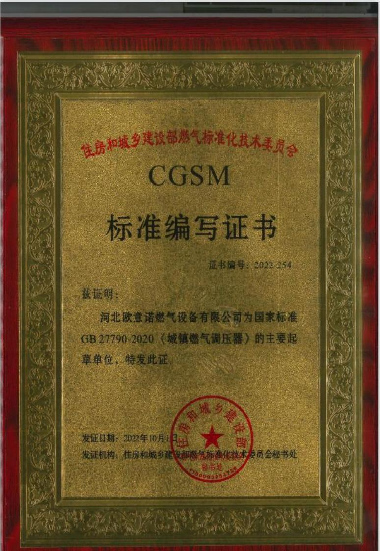
Sep . 01, 2024 02:07
Back to list
High Pressure Regulators - Precision Pressure Control Solutions
High Pressure Regulators Ensuring Safety and Efficiency in Gas Systems
High pressure regulators are essential components in various industrial and commercial applications where gases are utilized. They play a crucial role in controlling the pressure of gases that are stored in high-pressure cylinders or tanks, ensuring that the pressure delivered to the application or process remains within safe and optimal limits. This article explores the importance, functionality, and applications of high pressure regulators.
At its core, a high pressure regulator is designed to reduce the pressure of gas from a source, such as a cylinder or processing unit, to a lower, usable pressure. The primary function of a regulator is to maintain this lower pressure consistently, regardless of variations in upstream pressure or downstream demand. This is vital because fluctuations in gas pressure can lead to inefficient operations, equipment damage, or even catastrophic failures.
High pressure regulators generally consist of several key components the inlet and outlet connections, a diaphragm or piston mechanism, and adjustment screws for setting the desired output pressure. When gas enters the regulator, it acts on the diaphragm or piston, which moves to adjust the flow of gas based on the preset outlet pressure. Any increase in downstream demand will cause the pressure to drop, prompting the regulator to open further and supply the required gas, thereby maintaining a steady output.
One of the critical aspects of high pressure regulators is their ability to provide precise pressure control. This precision is particularly important in industries such as healthcare, where medical gases like oxygen must be delivered at specific pressures for safe patient use. Similarly, in the food and beverage industry, CO2 regulators maintain the required carbonation levels in soft drinks and beer, ensuring product quality and safety.
high pressure regulators

In industrial applications, high pressure regulators are used in processes such as welding, where gases like acetylene and argon require accurate flow and pressure control
. Moreover, in oil and gas extraction, these regulators help manage the pressure of gases and vapors during various stages of production, ensuring efficiency and safety in operations.Safety is a primary concern when dealing with high pressures, and high pressure regulators contribute significantly to maintaining safe conditions. Interestingly, these regulators are often equipped with safety features such as pressure relief valves, which automatically vent excess pressure, preventing potential ruptures and accidents. Additionally, materials used in the construction of regulators are selected based on their strength and resistance to corrosion, further enhancing their reliability in demanding environments.
However, like any mechanical device, high pressure regulators may require maintenance to ensure longevity and effective operation. Regular inspections and testing for leaks, while also monitoring the integrity of seals and diaphragms, are crucial to prevent failures. Many industries adhere to strict guidelines and standards regarding the use and maintenance of these regulators, emphasizing their vital role in operational safety.
In conclusion, high pressure regulators are indispensable in a wide array of applications, from medical fields to heavy industry. Their ability to control gas pressure not only enhances efficiency but also ensures safety in processes that rely on precise gas delivery. As technology advances, the design and functionality of high pressure regulators will continue to evolve, further improving their application across various industries. Investing in high-quality regulators with reliable safety features is essential for any operation handling high-pressure gases, reinforcing the importance of these devices in modern society.
Next:
Latest news
-
Safety Valve Spring-Loaded Design Overpressure ProtectionNewsJul.25,2025
-
Precision Voltage Regulator AC5 Accuracy Grade PerformanceNewsJul.25,2025
-
Natural Gas Pressure Regulating Skid Industrial Pipeline ApplicationsNewsJul.25,2025
-
Natural Gas Filter Stainless Steel Mesh Element DesignNewsJul.25,2025
-
Gas Pressure Regulator Valve Direct-Acting Spring-Loaded DesignNewsJul.25,2025
-
Decompression Equipment Multi-Stage Heat Exchange System DesignNewsJul.25,2025

